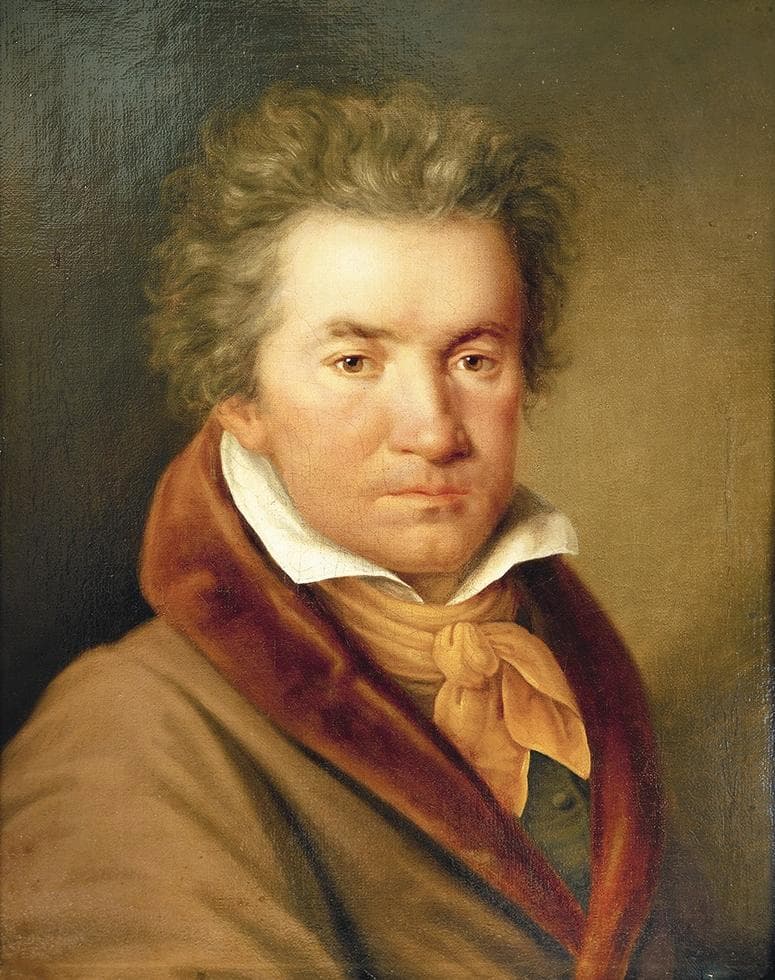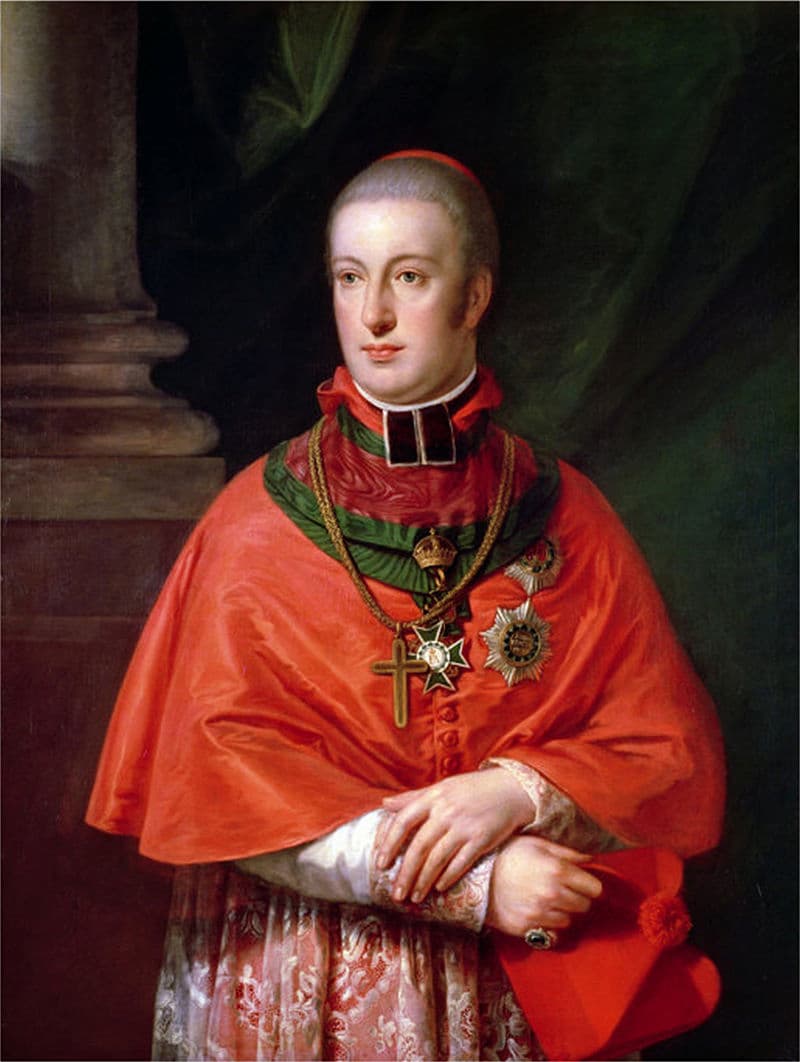Johann Baptist Malfatti, Elder von Monteregio was an Italian/Austrian doctor famous for being one of Beethoven’s physicians. Beethoven first made his acquaintance in 1809 and seemed to have consulted him several times in 1810. Early in 1810 he also met the doctor’s lovely 18-year-old niece Therese Malfatti, and for a time the composer harbored serious thoughts of marrying her. It all came to naught, and Beethoven sought peace and tranquility in the spa village of Baden.

Portrait of Ludwig van Beethoven by Joseph Willibrord Mähler, 1815
Over the next couple of months, he drafted a string quartet and a piano trio. He completed the Op. 95 “Serioso” Quartet in October 1810, and speedily composed the piano trio within the span of three weeks in March 1811. Beethoven’s last piano trio, published as his Op. 97 is dedicated to his benefactor Archduke Rudolph. In 1809, the Archduke arranged for a lifelong annuity for Beethoven, and the composer showed his gratitude with a number of dedications.
Ludwig van Beethoven: Piano Trio in B-flat Major, Op. 97 “Archduke” (Allegro moderato)
Apparently, Beethoven played the Archduke Trio in an informal setting two days after completing the work. However, the first public performance had to wait until 11 April 1814, when Beethoven, Ignaz Schuppanzigh, and Josef Linke presented the work at a Viennese hotel.

Therese Malfatti
The great violinist and composer Louis Spohr witnessed a rehearsal of the work and reported, “It was not a good performance. In the first place, the piano was badly out of tune, which was of little concern to Beethoven because he could not hear it. Secondly, on account of his deafness, there was scarcely anything left of the virtuosity of the artist, which had formerly been so greatly admired. In forte passages, the poor deaf man pounded on the keys until the strings jangled, and in piano, he played so softly that whole groups of notes were omitted, so that the music was unintelligible unless one could look into the pianoforte part. I was deeply saddened at so hard a fate. It is a great misfortune for anyone to be deaf, but how can a musician endure it without giving way to despair? From now on Beethoven’s continual melancholy was no longer a riddle to me.”
Ludwig van Beethoven: Piano Trio in B-flat Major, Op. 97 “Archduke” (Scherzo)
The pianist and composer Ignaz Moscheles attended the premiere, and wrote about the work, “in the case of how many compositions is the word ‘new’ misapplied! But never in Beethoven’s, and least of all in this, which again is full of originality. His playing, aside from its intellectual element, satisfied me less, being wanting in clarity and precision; but I observed many traces of the grand style of playing which I had long recognized in his compositions.”

Archduke Rudolf
Beethoven also knew that his time as a performer was coming to an end. Apart from one more performance a few weeks later, he never performed in public again. However, in his “Archduke Trio,” Beethoven had uniquely solved the basic problem of a piano trio. Although that particular ensemble values the chamber-music ideal of equality among the players, the massed sound of the violin and cello can’t really compete against the piano. For Beethoven, the piano trio actually involves four performers, the violinist, cellist, and the left and right hands of the pianist. According to a commentator, “the increased independence of left and right hand results in a thinner piano sound, as well as greater interplay in the music.”
Ludwig van Beethoven: Piano Trio in B-flat Major, Op. 97 “Archduke” (Andante cantabile)
The work was immediately recognized as a masterpiece. A contemporary reviewer writes, “One already knows in advance what Beethoven’s genius is able to accomplish. The name Beethoven warrants great expectations in and of itself, which each time are not only perfectly satisfied by his ingenious versatility, but are mostly far exceeded.” And a colleague added, “What our musical Jean Paul Richter has given us is once again grand, magnificent, unusual, astonishing, and original, but must be, however, not only heard frequently but also properly studied.”

Beethoven’s Archduke Trio, sketches for the 3rd and 4th movement
The “Archduke” Trio, Op. 97 is widely acclaimed as one of the finest achievements in the trio form and, indeed, in classical chamber music generally. A scholar writes, “The principal themes of the work attract immediate attention for their suppleness and cantabile character… and the themes are linked together by a strong family likeness and thus engender a powerful sense of unity in the work as a whole.”
For more of the best in classical music, sign up to our E-Newsletter
Ludwig van Beethoven: Piano Trio in B-flat Major, Op. 97 “Archduke” (Allegro moderato)
